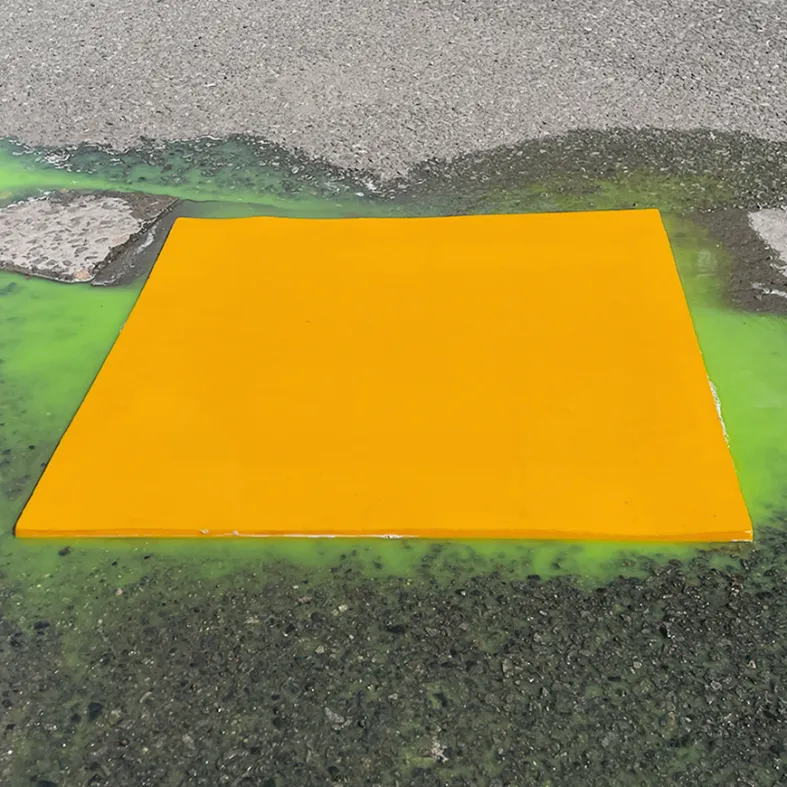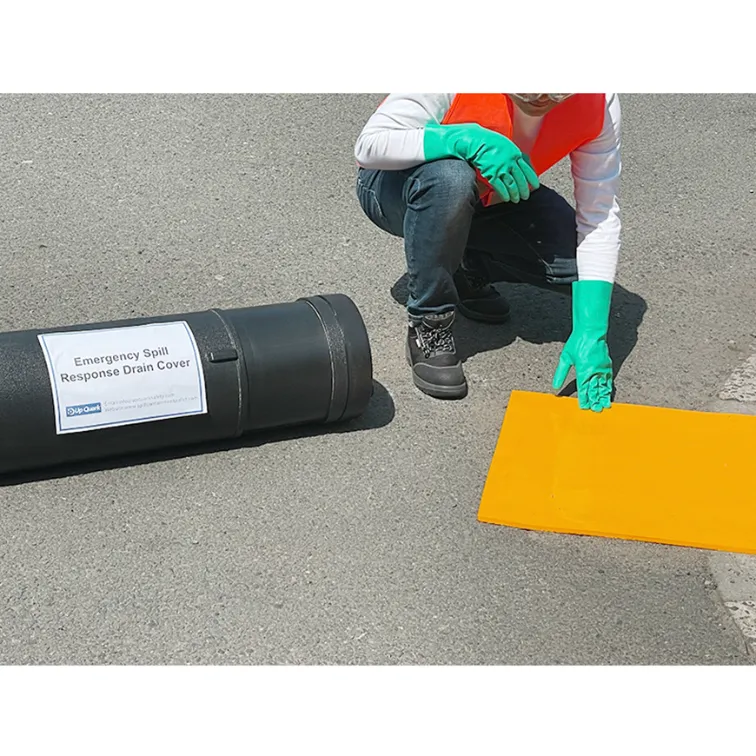
Spills can happen anytime, and when they do, protecting your drains becomes critical. Drain covers for spills act as a barrier, stopping hazardous liquids from entering sewer systems. By choosing the right drain spill covers, you ensure effective spill containment, prevent environmental harm, and keep your facility compliant with safety regulations. It’s a smart, simple solution.
Key Takeaways
Drain covers stop dangerous spills from polluting drains and nature.
Pick single-use or reusable covers depending on how often spills happen; reusable ones cost less in the long run.
Check the spill type and surroundings to pick the right size and material for proper control.
Understanding Drain Covers for Spills

Purpose and Importance of Drain Covers
Drain covers play a vital role in spill containment. They act as a barrier, preventing contaminants from entering drains and protecting the environment. When hazardous materials like chemicals or oils spill, these covers stop them from reaching waterways, which could harm aquatic ecosystems or even taint drinking water supplies.
Using drain covers for spills is also a cost-effective way to manage emergencies. They’re simple to use and can temporarily seal drains until the spill is cleaned up. Plus, they help you avoid fines from regulatory bodies like the EPA by keeping your facility compliant with environmental safety regulations.
By having the right spill drain covers on hand, you’re not just protecting the environment—you’re also safeguarding your business and reputation.
How Drain Covers Aid in Spill Containment
When liquid spills occur, drain covers are your first line of defense. They create a tight seal over the drain, ensuring no hazardous material seeps through. This containment prevents pollutants from spreading into stormwater systems or municipal water supplies.
Drain covers are especially effective because they’re designed to handle various spill types, from oils to aggressive chemicals. Their versatility makes them an essential part of any spill containment plan. Whether you’re dealing with a small spill or a larger emergency, these covers help you manage the situation quickly and efficiently.
Common Applications of Drain Covers
You’ll find drain covers used in many industries and scenarios. In industrial settings, they manage spills involving hazardous materials like chemicals or building site debris. Construction sites rely on them to control sediment and pollutants. Commercial facilities use them to prevent operational waste from entering stormwater runoff.
These covers are also critical for protecting public health. By stopping chemical runoff, they safeguard drinking water sources and reduce the risk of contamination. Industries like oil and gas, manufacturing, and even hospitals depend on spill containment products like drain covers to maintain safety and compliance.
No matter the setting, drain covers are a simple yet powerful tool for preventing environmental contamination and ensuring effective spill containment.
Types of Spill Containment Products: Drain Covers

Single-Use vs. Reusable Drain Covers
When it comes to spill containment, you’ll find both single-use and reusable drain covers. Single-use covers are great for emergencies. They’re quick to deploy and provide a reliable barrier. However, they’re not the most cost-effective option if you deal with frequent spills.
Reusable drain covers, on the other hand, are durable and easy to clean. They’re designed for long-term use, making them a better investment for facilities that need regular spill containment solutions. If you want a temporary drain cover that’s also reusable, products like UPQUARK Drain Spill Covers are a smart choice.
Material Options (e.g., Polyurethane, Rubber)
The material of a drain cover plays a big role in its effectiveness. Polyurethane is a popular choice because of its high chemical resistance. It can handle aggressive chemicals without degrading. It also creates a watertight seal, ensuring no leaks occur. Plus, it’s durable and maintains its shape over time.
Rubber is another option. It’s flexible and provides an effective seal, but it may not offer the same level of chemical resistance as polyurethane. When choosing between these materials, think about the types of spills you’re likely to encounter.
Moldable, Heavyweight, and Standard Covers
Drain covers come in different styles to suit various needs. Moldable covers are soft and flexible, making them perfect for uneven surfaces. Heavyweight covers stay in place even in windy conditions or high-traffic areas. Standard covers are lightweight and easy to handle, ideal for quick deployment.
Each type has its strengths, so pick one that matches your spill containment requirements. For example, moldable covers work well for outdoor drains, while heavyweight covers are better for industrial settings.
Features and Benefits of UPQUARK Drain Spill Covers
UPQUARK Drain Spill Covers stand out among spill containment products. They’re designed for emergency response, offering a reliable and effective seal. These covers are reusable and easy to clean, saving you money in the long run.
You’ll love their versatility. They come in customizable sizes, shapes, and even bright safety yellow for visibility. Their strong stickiness ensures they stay in place, even on uneven ground. Whether you’re dealing with oil, water, or chemicals, these covers provide a dependable solution for spill containment.
Choosing the Right Drain Cover for Spill Containment
Assessing Spill Type and Volume
The type and volume of a spill play a huge role in your selection of drain covers. For example, if your facility handles hazardous chemicals, you need a drain cover that can seal tightly and resist chemical degradation. Polyurethane drain covers are a great option because they’re durable and create a watertight seal. For smaller spills or temporary use, clay drain covers work well since they’re moldable and quick to apply. Always consider the potential volume of a spill. Larger spills may require multiple covers or additional spill containment equipment like a spill kit box or mobile spill control platform to manage the situation effectively.
Evaluating Material Compatibility and Durability
Not all materials can handle every spill. Polyurethane is highly resistant to chemicals, making it ideal for industrial settings. Clay covers are non-toxic and effective for flammable or hazardous leaks. When evaluating durability, think about factors like load-bearing capacity and resistance to temperature changes. Materials that degrade under extreme conditions won’t provide reliable containment. Always choose high-quality materials to ensure long-term performance and compliance with regulations.
Considering Environmental Conditions (Indoor vs. Outdoor)
Where you’ll use the drain cover matters. Outdoor environments expose covers to UV rays, temperature fluctuations, and weather conditions. Polyurethane covers, with their flexibility and resistance to tearing, are perfect for outdoor use. Indoors, you might prioritize lightweight options for easy handling. Regular maintenance, like cleaning and inspecting for damage, ensures your drain protection remains effective in any setting.
Selecting the Right Size and Shape
Accurate measurements are key to choosing the right size and shape. Measure the drain opening’s width, length, and depth to ensure a proper fit. A well-sized cover prevents leaks and integrates seamlessly with your facility’s layout. For irregularly shaped drains, moldable covers provide a snug fit. Proper sizing also simplifies installation and maintenance, keeping your spill containment products ready for action.
Balancing Cost and Reusability
Balancing cost with effectiveness is crucial. Reusable covers, like polyurethane ones, save money over time because they’re washable and durable. Single-use covers might be cheaper upfront but can add up if spills happen frequently. Investing in high-quality spill containment products ensures compliance with regulatory requirements and protects your facility from costly fines. Plus, it’s a responsible choice for the environment.
Choosing the right drain cover is essential for effective spill containment. It protects the environment, ensures compliance, and saves you from costly fines. Evaluate your specific needs by considering spill type, material, and environmental conditions. Avoid common mistakes like ignoring size or material compatibility.
Always keep a suitable drain cover ready for emergencies. Quick deployment can prevent contamination and financial risks. Use tools like spill kits and conduct regular inspections to stay prepared. If you’re unsure, consult experts to find the best containment solutions for your facility.
FAQ
What makes UPQUARK Drain Spill Covers different from others?
UPQUARK covers offer strong stickiness, reusable design, and chemical resistance. Their bright yellow color ensures visibility, while their flexibility suits uneven surfaces. They’re reliable and easy to maintain. 🛡️
How do I choose the right size for my drain cover?
Measure your drain’s width and length. For irregular shapes, pick a moldable cover. UPQUARK covers fit drains from 30 to 122 cm, ensuring a snug seal. 📏
Can I use UPQUARK Drain Spill Covers outdoors?
Yes! These covers resist UV rays and temperature changes. Store them in a UV-resistant case for durability. They’re perfect for outdoor and indoor spill containment. 🌦️
See Also
Selecting Ideal Universal Absorbent Socks for Your Business
Evaluating UPQUARK Marine Absorbents for Oil Spill Response
Practical Uses of Oil Absorbent Socks Explained

